
die Wiener Lust
The city of Vienna was built over undercovered fields of oil, gas and thermal springs. Those springs where the main axis of the development of the Viennese pleasure, die wiener Lust. Bespoke the city grew, thermal water stores grew as well. Right after the Great War, a process of assimilation and ruining starts over these establishments and after the Second World War, the few left behind ruins get disguised in the city’s fabric. Wien’s public bath own culture lays forgotten ever since.
From hedonist palaces to shopping malls.
Die Wiener Lust aims at the recovery of the city’s collective thinking of Vienna’s own bathing culture, inherited from the romans, outlined by centuries of the Östen Reich ruling (Oesterreich). Seeking to overcome currents massification of Mall’s swimming pools culture, a thorough documental study is carried on from research sources such as the federal library and the state archives, a collection of architectonical experiences related to bathing get unburied. Through conceptual project processes coined as postproductions, a bunch of so to say built pieces are recovered, related to one another through topological laws. Relative topological position based on these relations generate itineraries in-between hiper-referenced objects.
An energy equilibrium is aimed at in the project’s agenda. Through a study called Thermodynamic Mixer, the proportion in between the main bathing programme and the complementary is stablished, seeking a balance in-between cooling and heating loads. Through this very scientific process, another goal is reached: the will of re-enacting of the very Viennese bathing palace experience, palaces that included hedonist programmes such as ball rooms, theatres or libraries. Throughout this dualism based on the thermodynamic cycle, these activities once related to bathing are shorted and scaled in proportion of their cooling load so that the energy exhaled by the HVAC machines serves to heat the Therm.
This scheme brings its complexity to the buildings section, where the Therm, built in a buried concrete cavern, seen from the outside as massive vaults stranding in the Danube’s stone beach. The cooled part of the building occupies a superstructure, a massive steel-girder frame slab made, protected from the River’s floods. Stereotomic heating, Tectonic cooling. A Ledge that contains and marks the vaults, that act like the past that is yet to be unleashed.
From hedonist palaces to shopping malls.
Die Wiener Lust aims at the recovery of the city’s collective thinking of Vienna’s own bathing culture, inherited from the romans, outlined by centuries of the Östen Reich ruling (Oesterreich). Seeking to overcome currents massification of Mall’s swimming pools culture, a thorough documental study is carried on from research sources such as the federal library and the state archives, a collection of architectonical experiences related to bathing get unburied. Through conceptual project processes coined as postproductions, a bunch of so to say built pieces are recovered, related to one another through topological laws. Relative topological position based on these relations generate itineraries in-between hiper-referenced objects.
An energy equilibrium is aimed at in the project’s agenda. Through a study called Thermodynamic Mixer, the proportion in between the main bathing programme and the complementary is stablished, seeking a balance in-between cooling and heating loads. Through this very scientific process, another goal is reached: the will of re-enacting of the very Viennese bathing palace experience, palaces that included hedonist programmes such as ball rooms, theatres or libraries. Throughout this dualism based on the thermodynamic cycle, these activities once related to bathing are shorted and scaled in proportion of their cooling load so that the energy exhaled by the HVAC machines serves to heat the Therm.
This scheme brings its complexity to the buildings section, where the Therm, built in a buried concrete cavern, seen from the outside as massive vaults stranding in the Danube’s stone beach. The cooled part of the building occupies a superstructure, a massive steel-girder frame slab made, protected from the River’s floods. Stereotomic heating, Tectonic cooling. A Ledge that contains and marks the vaults, that act like the past that is yet to be unleashed.

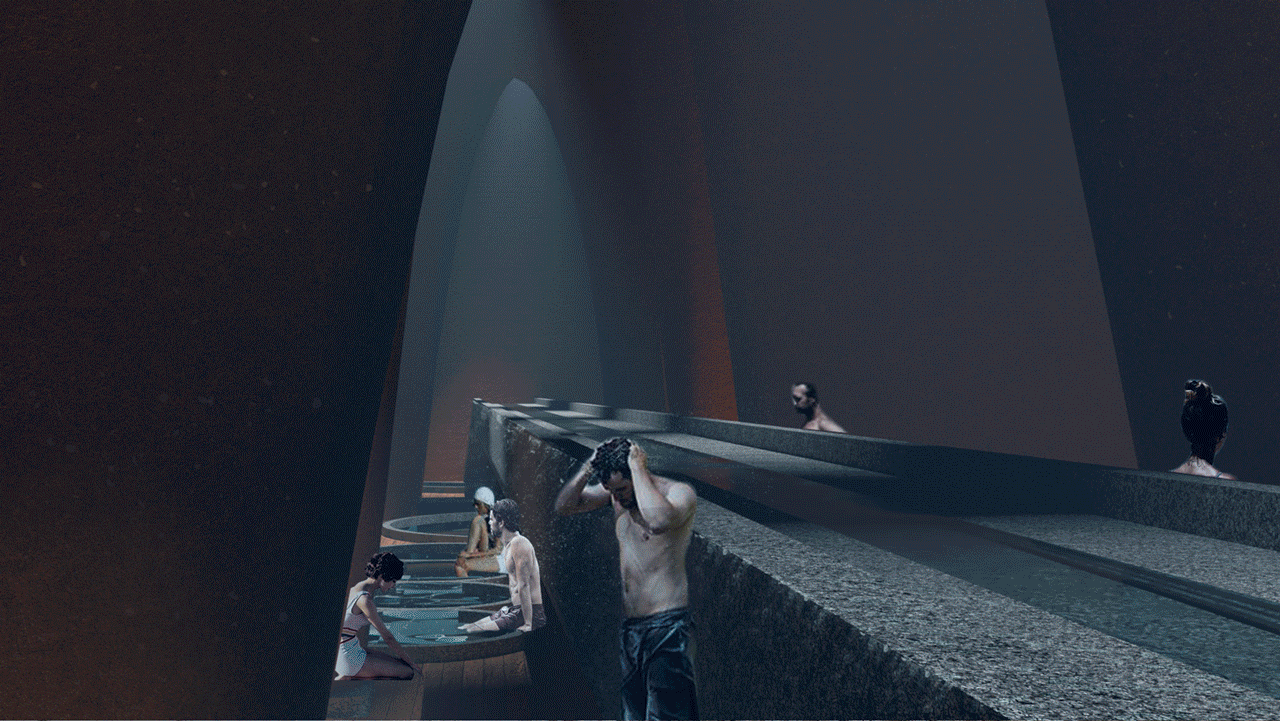
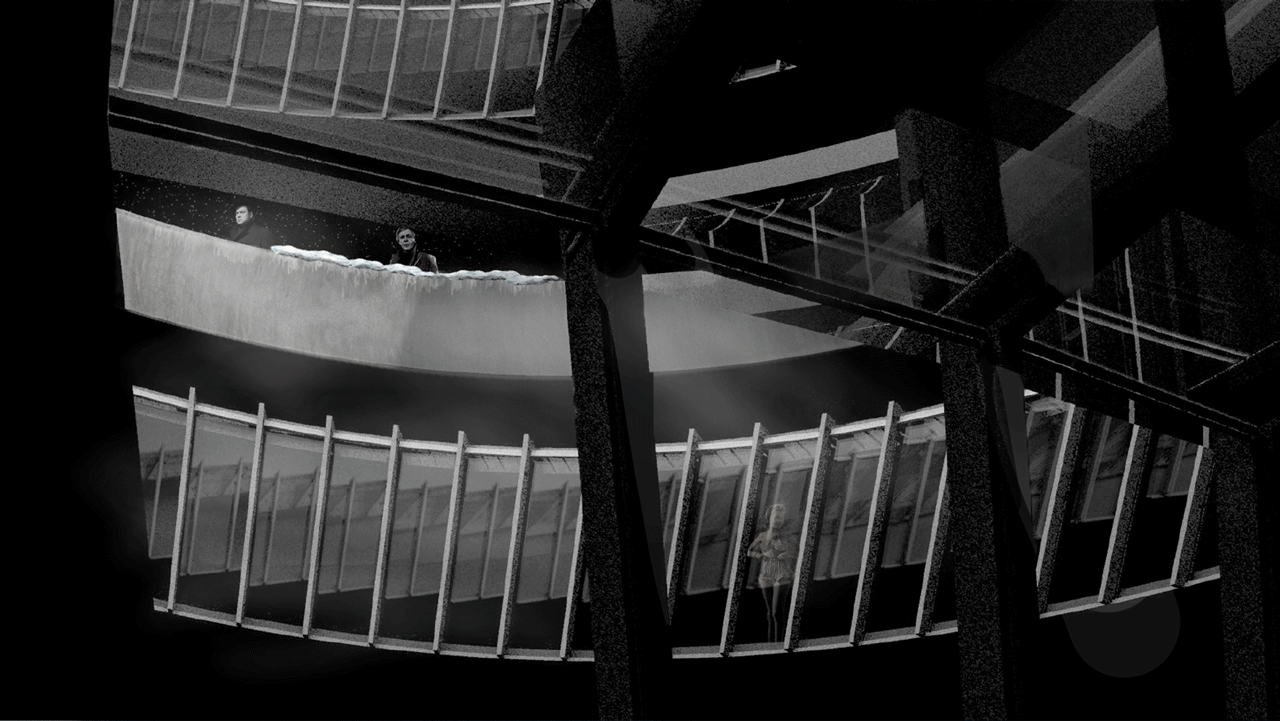
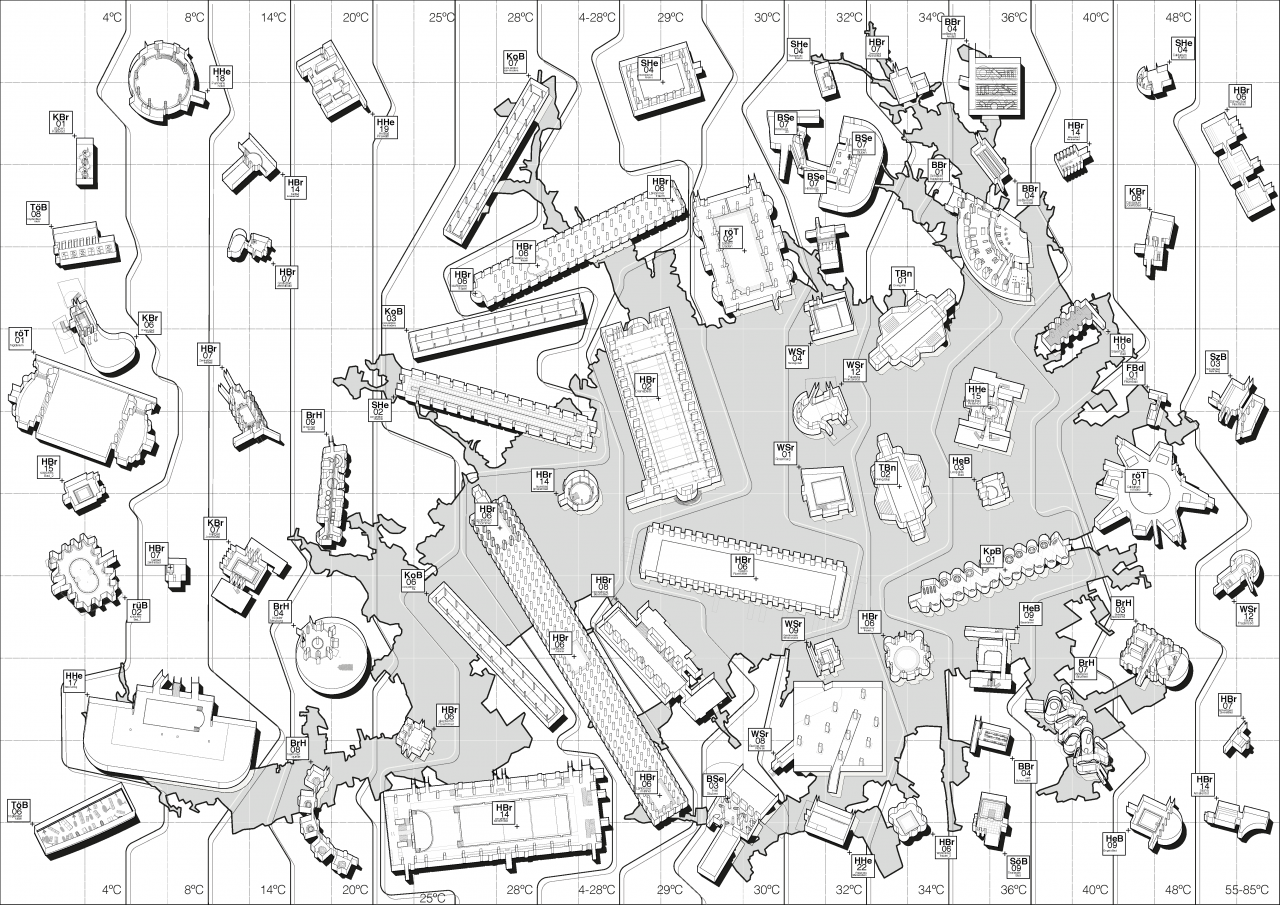
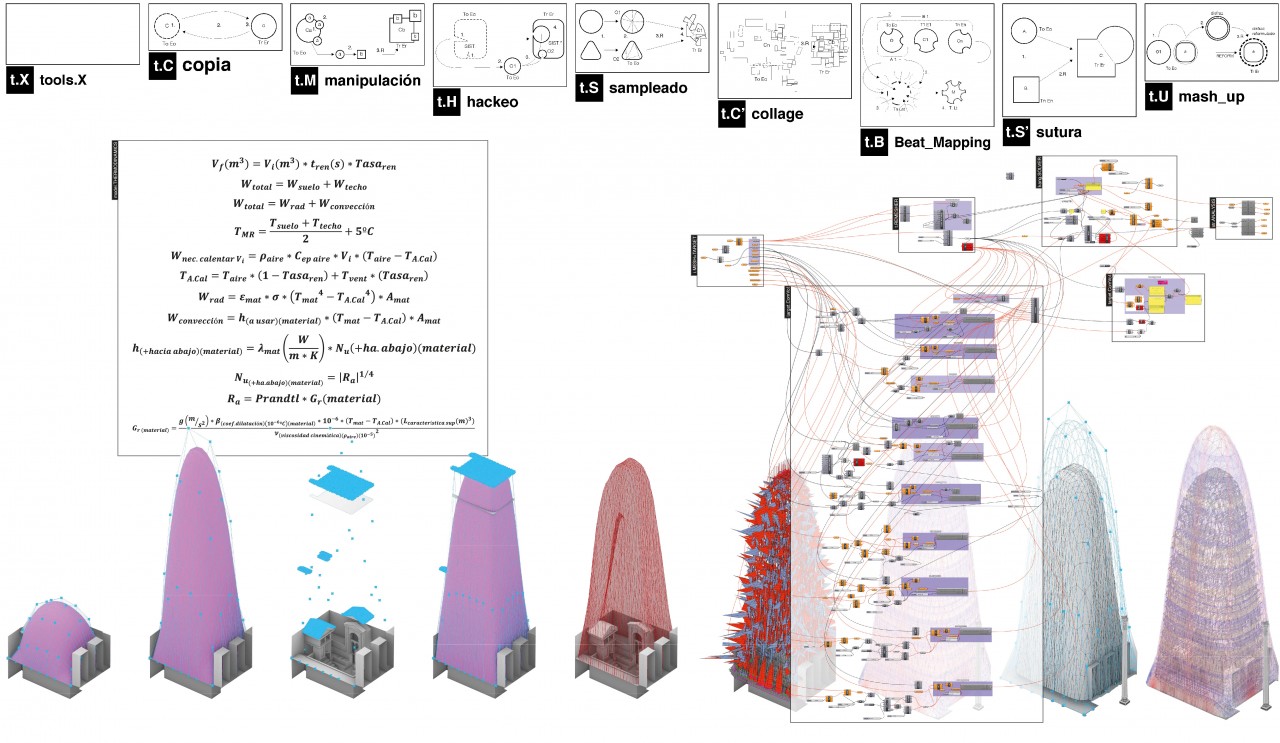
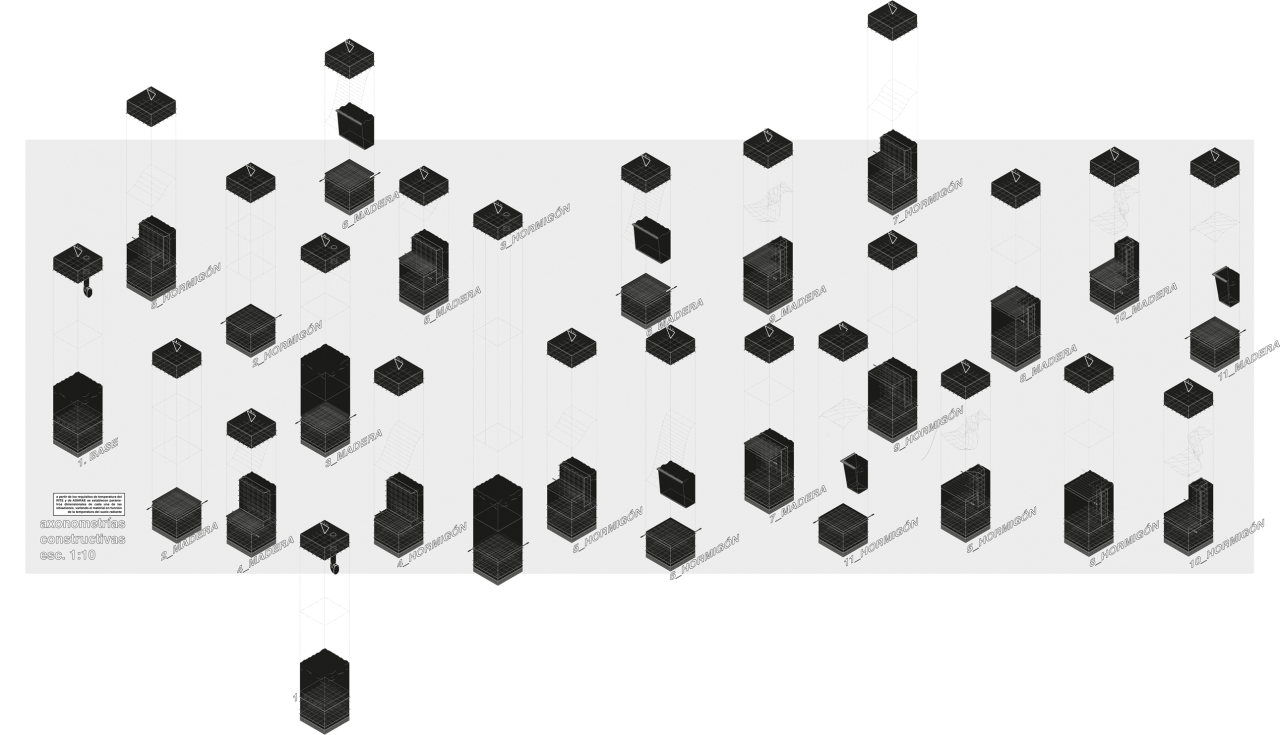

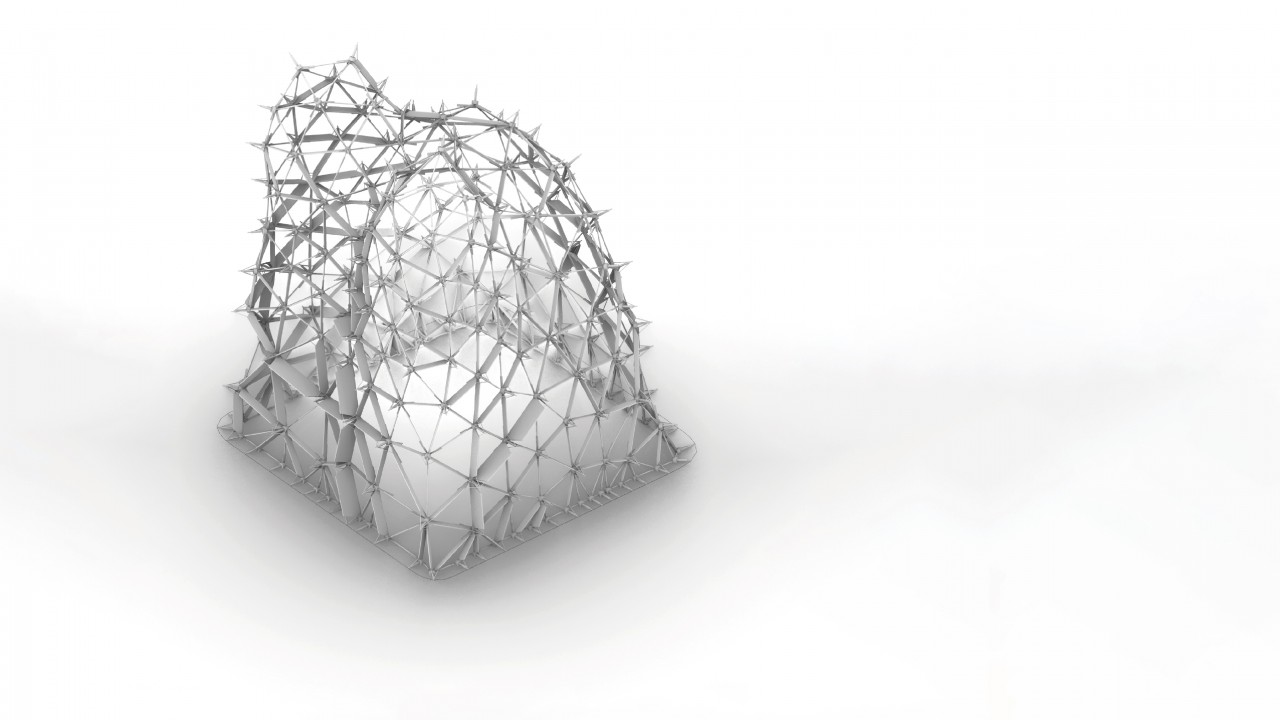


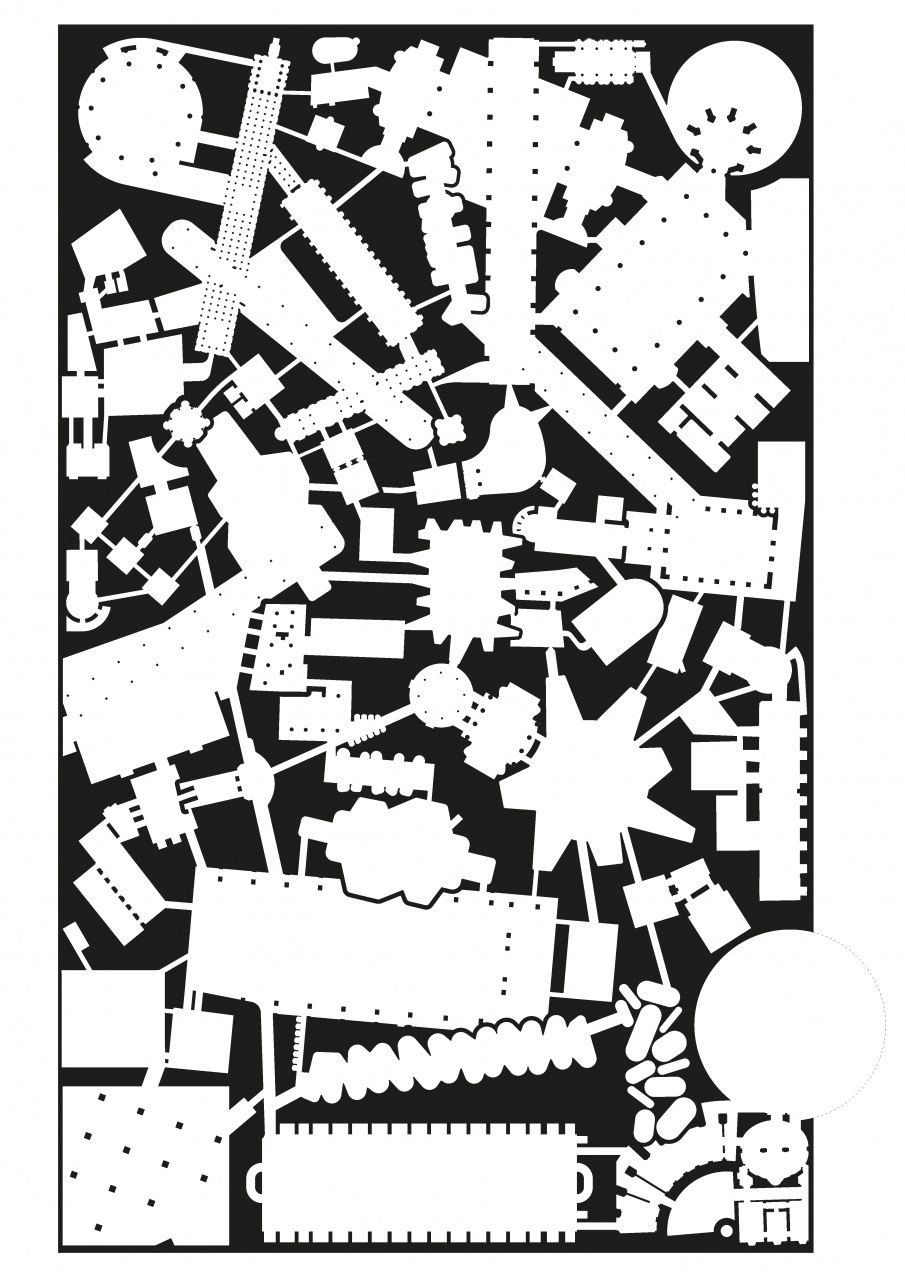
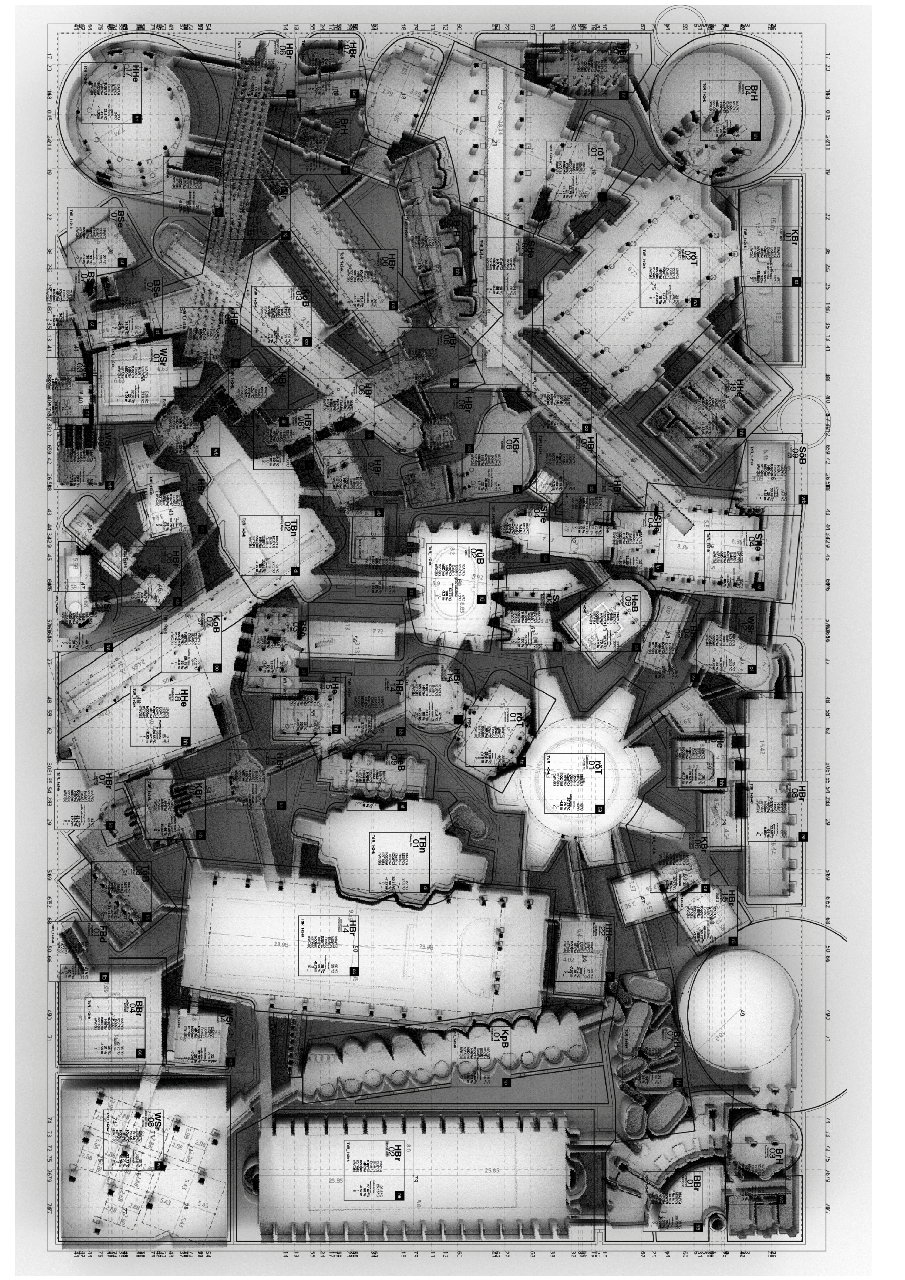
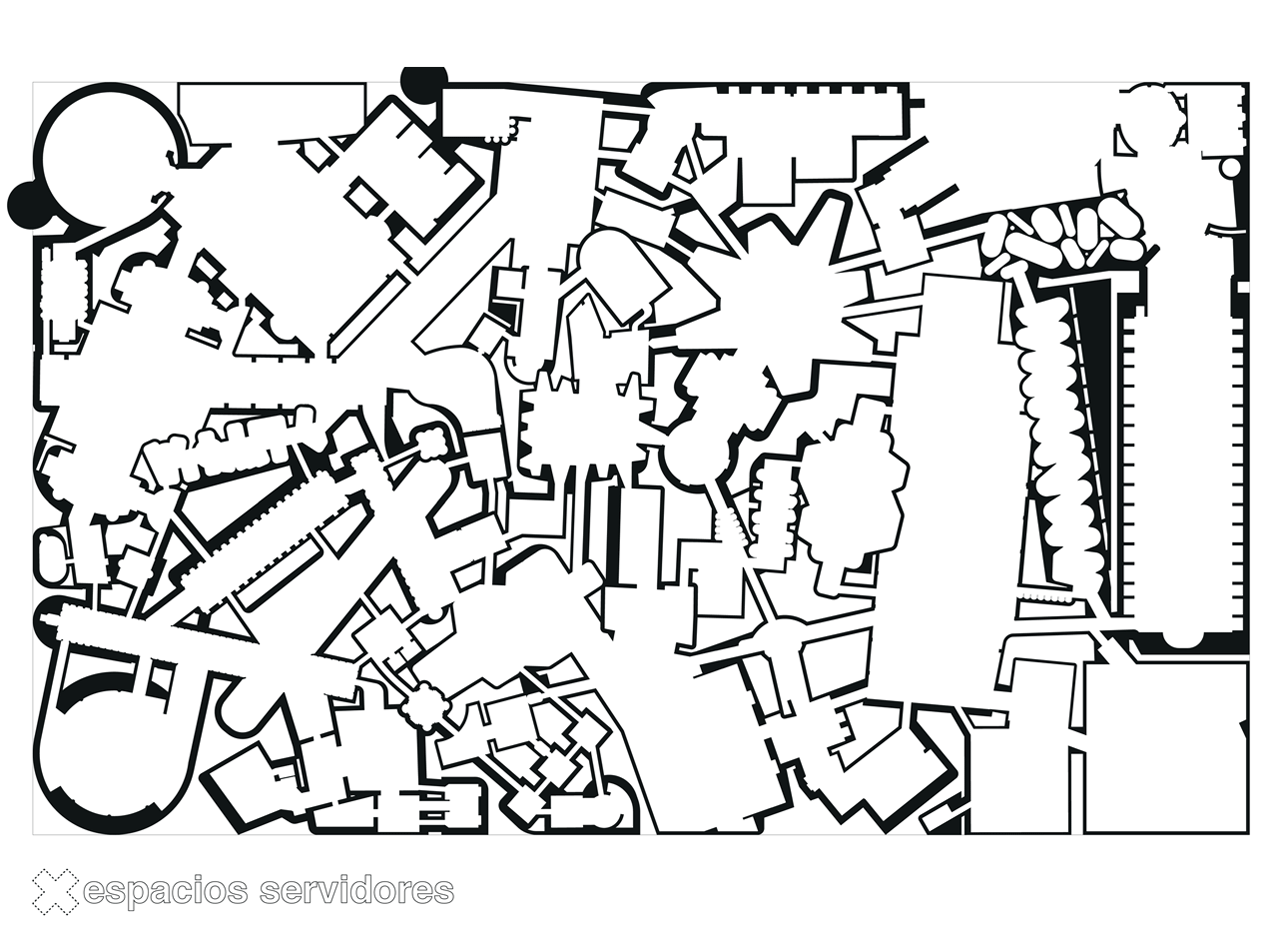
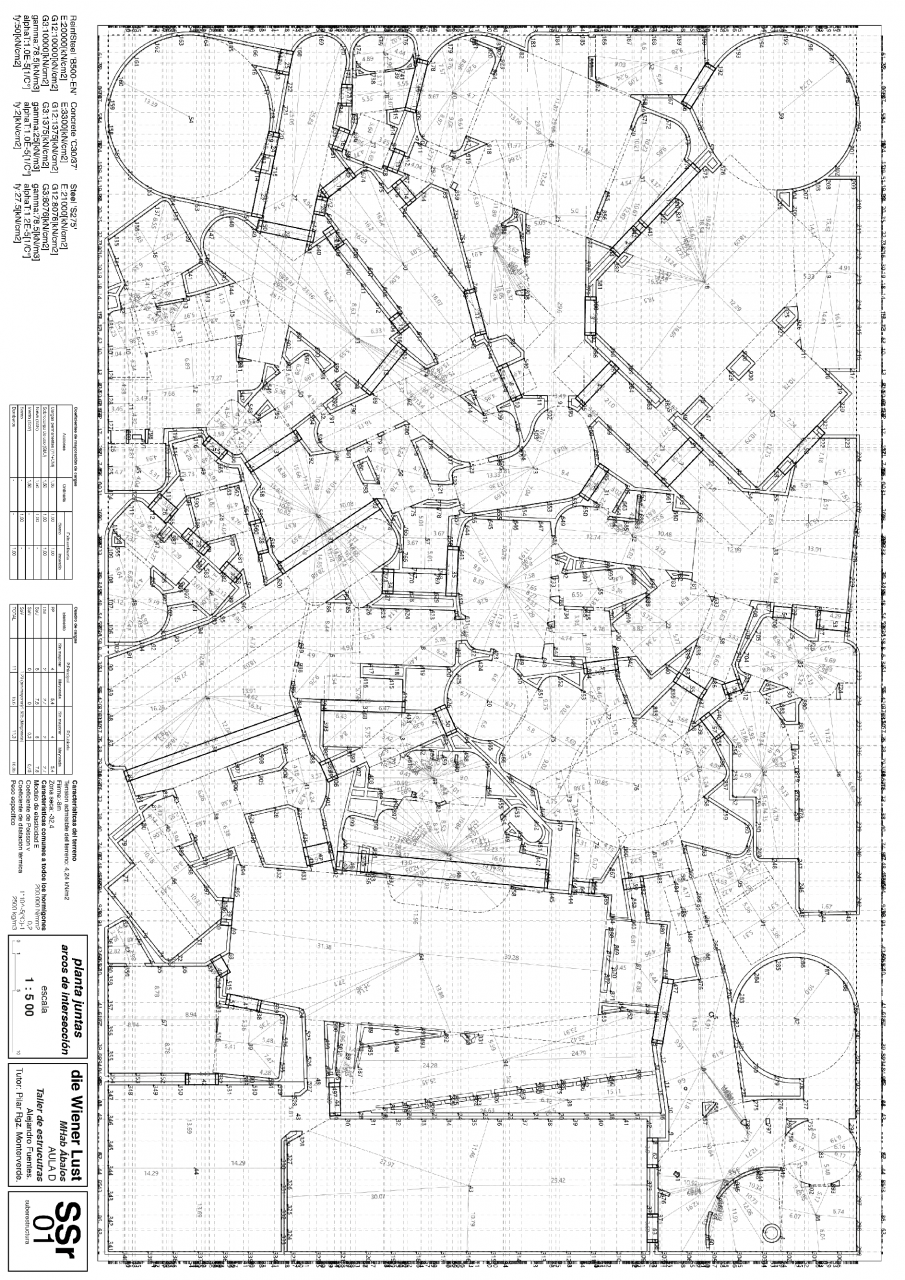
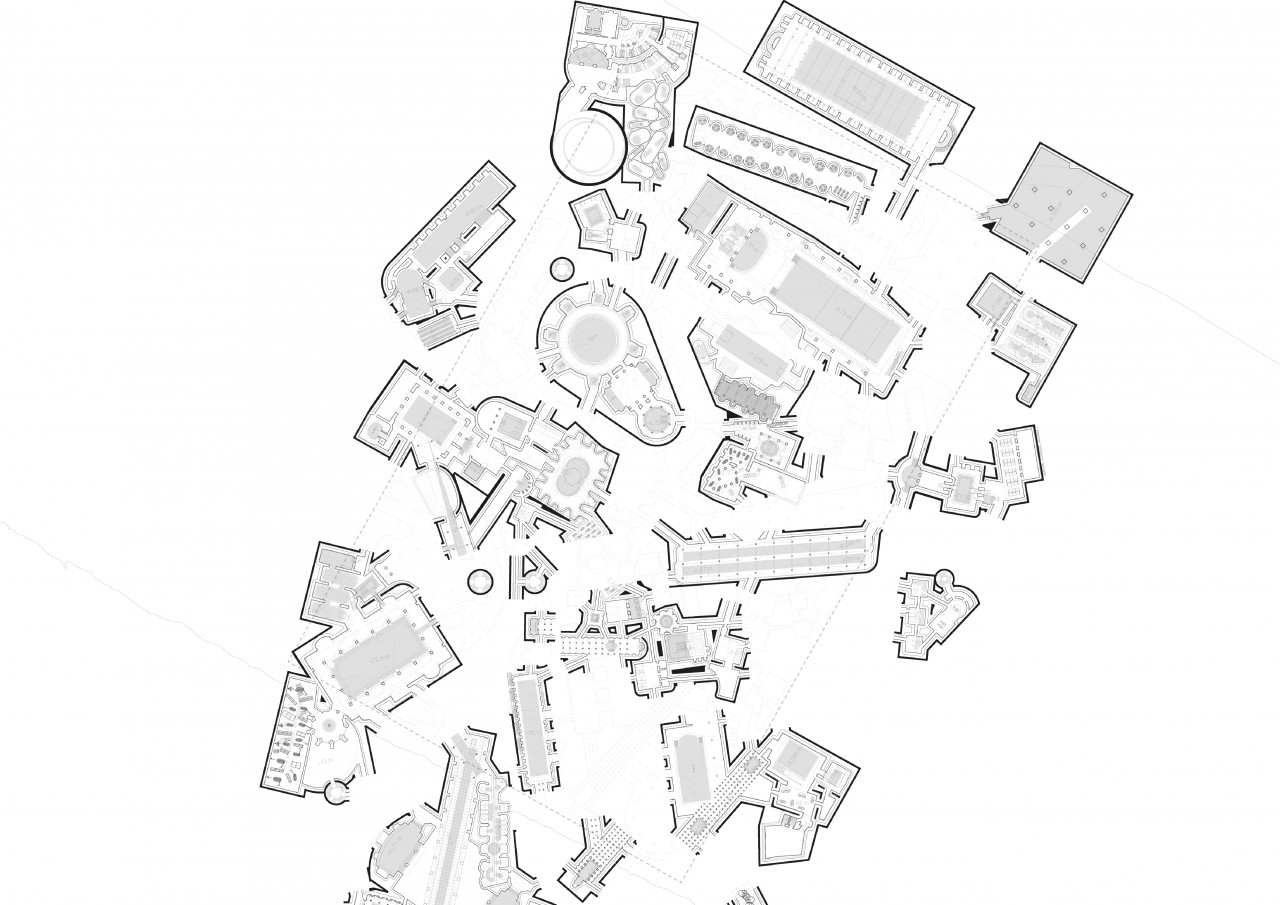



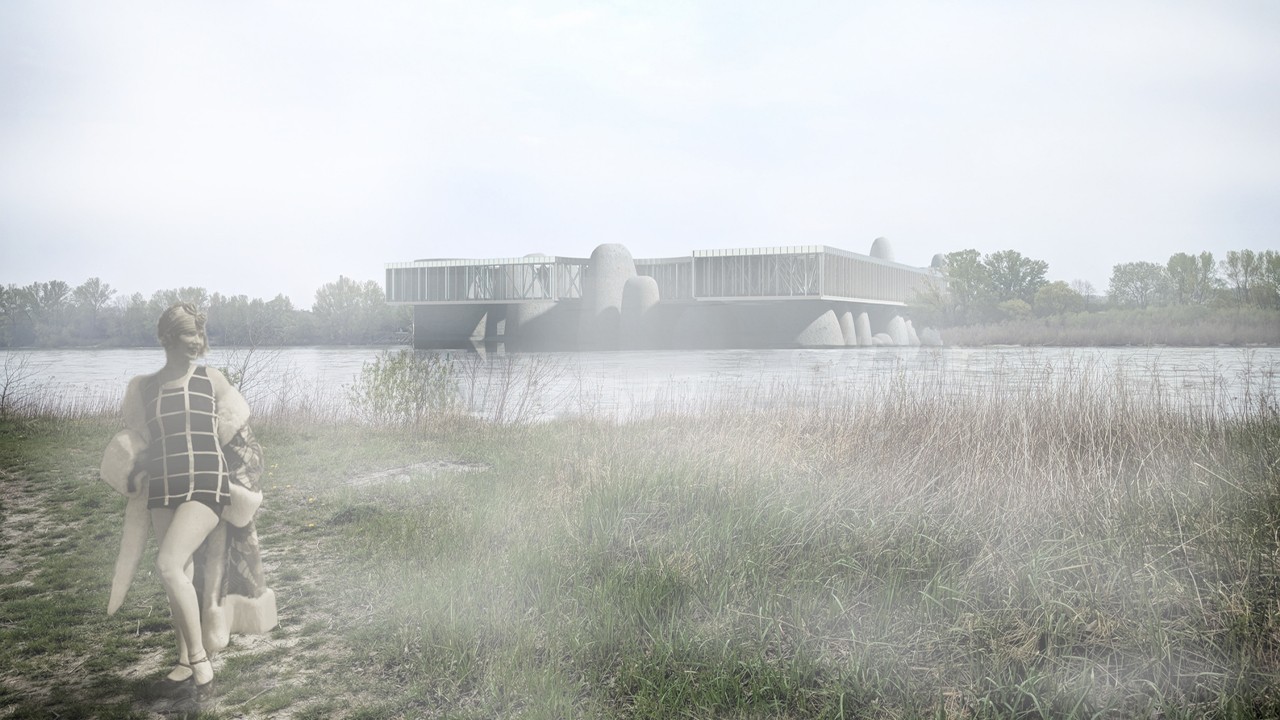
- 00 - Description
- 01 - Access' Secuence
- 02 - bathing experience
- 03 - Farewell
- 04 - Exceprt(a)
- 05 - Therm/EQ
- 06 - Discrete Heights
- 07 - Built Environments
- 08 - Pointy Vault
- 09 - NoHumanScale
- 10 - Built Collage
- 11 - Huevo Pochado
- 12 - LensLength
- 13 - Wandering
- 14 - Anchors
- 15 - Submarine(s)
- 16 - (the) Section
- 17 - Radiant Piazza
- 18 - Blaues Donau
- 19 - CliffHanger
- 20 - Video